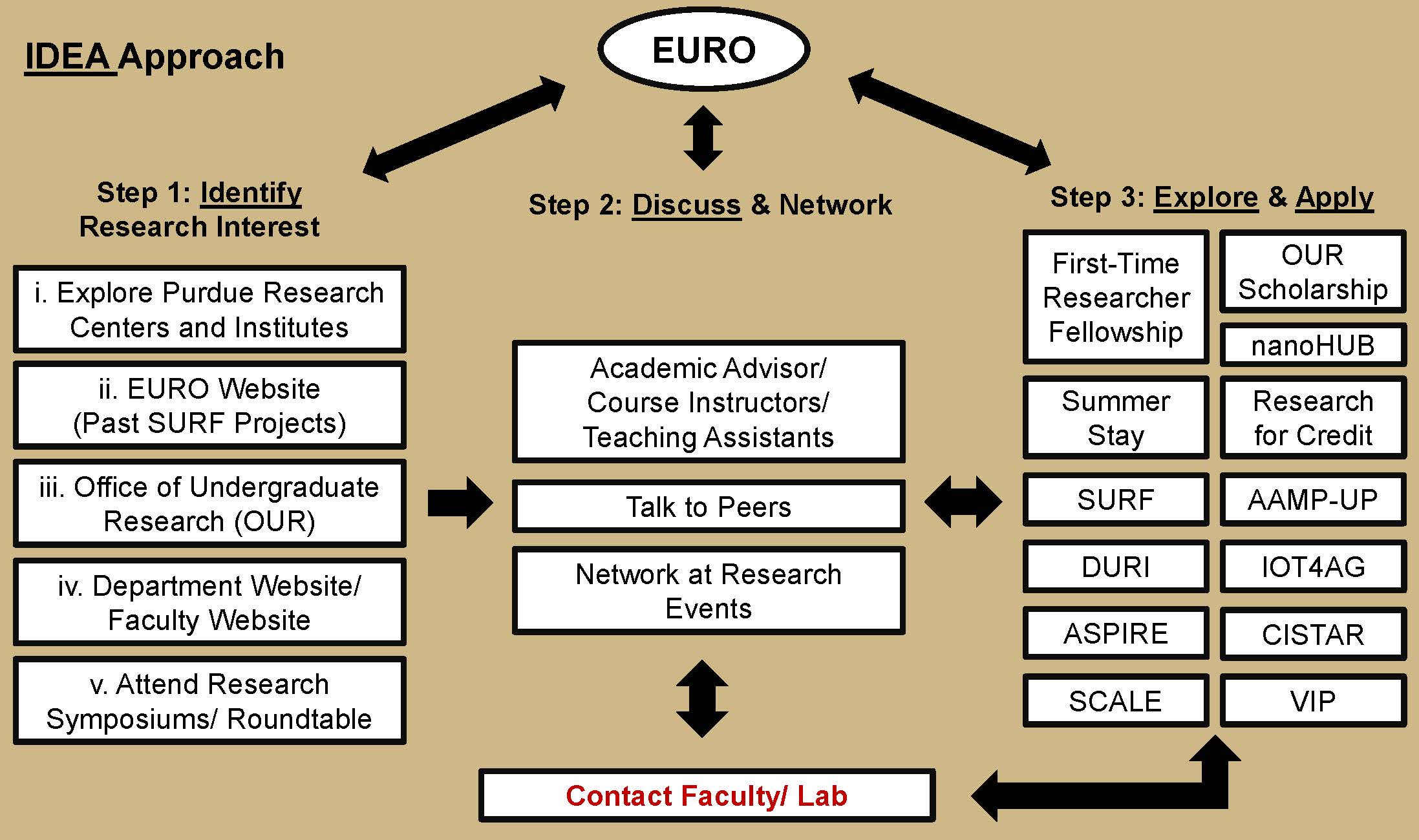Guide to Search Undergraduate Research Opportunities
See also:
Timeline for Undergraduate Research Experience
Step 1: Identify Your Interests: Brainstorm broad research fields by
-
Reflecting on what scientific challenges you like
-
Reading scientific articles
-
Listening to podcasts of science news
-
Subscribing to e-mail newsletters from scientific journals
-
Following academics, journals, and universities on social media
-
Attending department research seminars
-
Enrolling in Introductory courses to learn about the process
The road from Step 1 to Step 2 is a non-linear process.
-
Your major should not limit you from searching for research labs in other departments/college
-
Most labs are interdisciplinary teams or collaborate across disciplines/majors
-
Choose labs based on the questions they are trying to answer and whether that resonates with your interest
-
Use i-v search strategies to learn more about undergraduate research positions. Directed websites are hyperlinked*
-
Search by Keywords (example: “Implants”)
-
Review the Institute’s website and the point-of-contact
-
Take note of the range of disciplines of the researchers in the Center
-
Review Project/ Contact the specific lab
ii. Engineering Undergraduate Research Office (EURO)
-
Look for keywords and identify faculty mentors in past SURF projects
-
Review Undergraduate Research Opportunities at Purdue listed on EURO website
-
A student video story: how to get involved in research
iii. Office of Undergraduate Research (OUR)
-
Use OURConnect portal to connect to research mentors across campus with open positions for undergraduates
iv. Departmental / Faculty Website
-
Some departments have detailed websites: search for faculty by research areas
-
Browse faculty research focuses on their website. If a faculty do not have a website, use Google Scholar/ ResearchGate/ LinkedIn etc. to find out more about their research before contacting them
v. Attend Research Symposiums/ Roundtable
-
Explore state-of-art research fields and identify research groups that actively host undergraduate researchers from annual events:
-
Spring and Fall Symposium, SURF Symposium, Research Roundtable
Step 2: Discuss & Network
- Consult Departmental Undergraduate Advisor about departmental resources
- Instructors and TAs of courses: drop by office hours, ask about their research
- Talk to other students already engaged in research
- Engage at research events, ask for opportunities
Step 3: Explore & Apply
Apply to a program. Note that different programs have different structures and dates.
-
Research for Credit
Contact faculty/lab that conducts research
-
Narrow down the list of faculty you wish to work with. Make sure to look at positions in multiple labs/majors/colleges.
-
Reach out to multiple labs/faculty: do your homework before approaching them
-
Email them with the following:
-
Name, major, year and resume
-
Why does their research interest you
-
What skills do you have (if you are new to research, focus on motivation)
-
Express interest in setting up a meeting to hear more about their research
-
-
Some faculty require you to submit a cover letter or resume to apply for a position in their lab; others may be less formal and simply arrange a meeting after an e-mail dialogue
Note:
You can opt for research for credit or for pay (depending on the lab’s funding availability and your academic status). When reaching out to faculty, this might be another topic for discussion. Also, to enroll in research for credits, have a conversation with your departmental academic advisor for potential ways to incorporate the credits in your Plan of Study.

